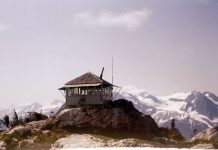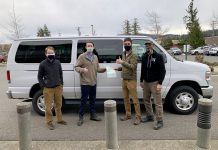Conceived by a simple idea to fly a Boeing Stearman biplane from Bellingham, Washington to Nome, Alaska and across the Bering Strait to Provideniya, Russia, longtime Whatcom County residents Jeff Geer, a local businessman and pilot, and Craig Lang, a professional writer and instructor, formed the BRAVO 369 Flight Foundation.
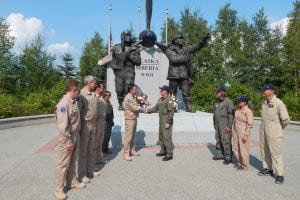
The goal was to use the flight as an educational vehicle to inspire students to pursue STEM-based careers. While researching the safest way to fly a vintage World War II aircraft to Alaska, they discovered a part of American history that most people know nothing about – Lend-Lease and the Alaska-Siberia air route (ALSIB). Between 1942 and 1945, this route was used to ferry nearly 8,000 military aircraft and other war materiels to the former Soviet Union under the Lend-Lease program.
The Lend-Lease act was proposed during the Roosevelt administration and passed into law by Congress shortly before the U.S. entered the war. It was used to provide aircraft, ammunition, and other vitally needed equipment to our allies throughout the world—including Russia—in the hopes of preventing the war from spilling into the western hemisphere.
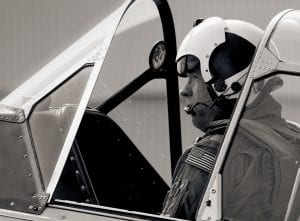
Almost overnight, American factories were converted from Depression-era production into a military powerhouse second to none. However, this came at a terrible price – one that few people are aware of, especially here at home. According to Craig, “Our research has uncovered that ‘for every one American casualty on the battlefields during the war, there were at least eight that occurred on the home front.’” Our factories were running at a breakneck speed with aircraft rolling off the assembly floor at a rate of one per hour just to catch up with and later overtake German as well as Japanese technology. And here is where the story really gets interesting.
Consider it like a giant relay race. When the planes came off the factory floors, someone had to fly them to embarkation points throughout the United States – this is where America’s first women military pilots, known as the WASP (Women Airforce Service Pilot), came in. In the case of the ALSIB program, their handoff point was Great Falls, Montana. From there, the men of the 7th Ferrying Group flew the aircraft up through Canada to Fairbanks. At that point, they were handed off to the Soviet pilots, already stationed at Fairbanks, who flew them another 3,000 miles across Siberia to Krasnoyarsk, Russia and beyond.

The more Craig and Jeff dug into their research, the more fascinating history they found. Construction of the air route was an immense undertaking through the vast wilderness, requiring the creation of the Alaska Highway (known as the ALCAN) which, at the time, was considered second in difficulty only to the Panama Canal. It was used as a major thoroughfare to support numerous airfields as well as a ground transportation required for Alaskan defenses.
The ALSIB route was beyond treacherous and many pilots died while ferrying aircraft. Given the desperate situation in Russia and the need for American supplies, flight operations ran year-round in all kinds of weather. Russians who landed in Krasnoyarsk reportedly asked to fly combat missions instead. On both continents, downed pilots who survived found themselves stranded in some of the harshest terrain on the planet, especially during the winter months where temperatures dropped to as much 60 degrees below zero. In addition to U.S. and Canadian air rescue, the indigenous tribes of the North played a significant role in rescuing pilots and, in many cases, were their last chance for survival.
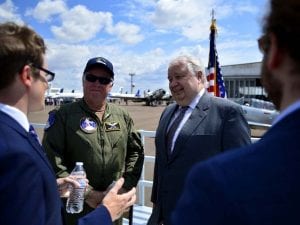
All of this so fascinated Craig and Jeff, that they wanted to raise awareness and tell the story of the ALSIB by recreating the flight. In 2015, the BRAVO 369 Flight Foundation teamed up with a Russian flight partner, RUSAVIA, as part of the “Warplanes to Siberia / ALSIB 2015” commemorative flight. Working together, just as the U.S. and Russian pilots did during World War II, the international team flew the 6,000-mile air route in World War II-era planes from Great Falls, Montana, to Krasnoyarsk, Russia and then on to Moscow. While not highly publicized in the U.S., this event generated a significant amount of world press as well as gained official recognition from both the U.S. and Russian governments, including having the project read into the U.S. Congressional Record.
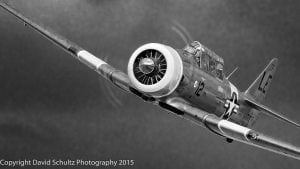
In 2020, BRAVO 369, again with Russian flight partner, RUSAVIA, will conduct an around-the-world “friendship flight” across Russia using the historic Alaska-Siberia air route (ALSIB) to celebrate the 75th anniversary of the end of World War II in Europe. According to Jeff Geer, who will lead the flight, “By recognizing our strong alliance during the war years and shedding light on this little known aspect of our common history, we have a unique opportunity to revisit what our war heroes hoped their sacrifices would do to ensure a brighter future for the world. Ours is a factual account of one of the great missing pieces in history. Few people know of the importance of Lend-Lease and the Alaska-Siberia air route: ‘America’s secret “pipeline” between Washington, DC and Moscow.’”
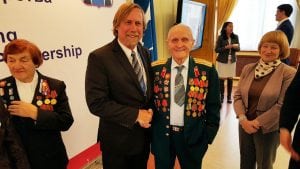
They have two years to assemble the international team of pilots and film crews, obtain flight permits, plan and fundraise. “There are huge challenges politically,” said Jeff. “This will require massive cooperation among the many countries we are going to be passing through. We’re a small non-profit organization that has been given a unique opportunity to do something positive and of great significance at this moment in time.”
Leading up to the 2020 flight, Craig and Jeff are writing “Code Name: ALSIB,” a book telling the history of the American sacrifice on the home front as well as the unknown cooperation between the U.S. and Russia during the war years. In addition, they are developing a twelve-part documentary film series of the same name. Beyond raising awareness, BRAVO 369 is seeking financial support. Being an all-volunteer 501(c)(3) nonprofit, they rely entirely on grants, sponsorships and private donations. They’re calling upon everyone who’s interested in this story—in history, aviation, diplomacy and inspiring our youth to “aim high”—to donate and help honor our forgotten veterans from 75 years ago. For more information, updates and how to become involved, please visit their website.
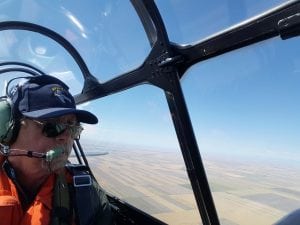
In the words of former U.S. Ambassador to Russia, John Tefft, “I am confident that Americans and Russians will continue to find common cause on issues of mutual interest. And initiatives like this serve as an important reminder that our countries can, have and do work together. Let us commit ourselves to ensuring that this will always be the case.”
Update:
On October 5, the Ambassador of the Russian Federation to the United States, Anatoly Antonov, presented a letter to Jeff Geer and the BRAVO 369 Flight Foundation, giving his personal endorsement of the historic ALSIB 2020 project. Ambassador Antonov stated, “Intent to repeat the reenactment in 2020 honoring the 75th anniversary of the victory in the Great Patriotic War and the end of WWII, while making it a round-the-world flight with a greater number of planes, deserves the highest praise and support. I am confident that your project will meet the high standards of the humanitarian mission and will show a clear example to our nations of one of the renowned chapters in our ancestors’ heroic deeds, make a great contribution to the efforts aimed to preserve Russia – U.S. common historical and cultural heritage.”
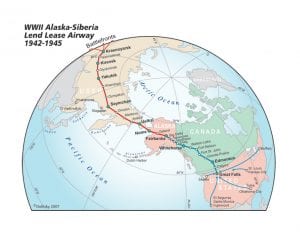
Header photo: BRAVO 369’s WWII-era North American AT-6 Texan over Skagit County in 2015. Photo courtesy: Lyle Jansma – Aerocapture Images.






